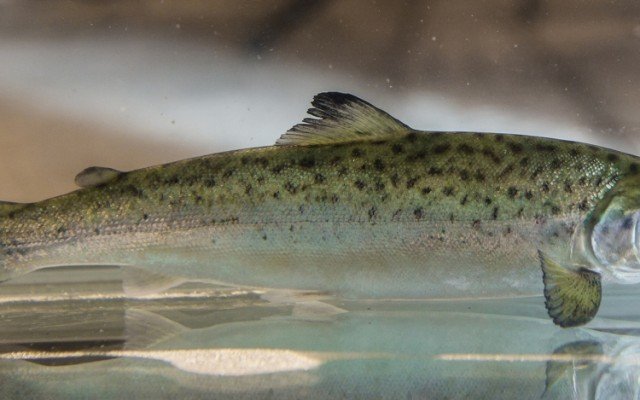Wound problems in the Norwegian aquaculture industry are complex, but many of the problems are related to the initial period when fish are transferred to the sea, and some of the wounds are caused by the ulcerative bacterium infection by Tenacibaculum. This bacterial genus causes tenacibaculosis, but the disease hasn’t yet been given a common name. The occurrence of wounds and Tenacibaculum are most prevalent in Northern Norway due to its lower ocean temperatures.
Previously, Nofima has discovered suppression of immunity in salmon during the time of smoltification. Therefore, the salmons’ resistance to infections may be reduced, causing them to be more susceptible to disease when transferred to the sea. Nofima’s fish health scientists have now been involved in testing this in relation to bacterial infection and seawater acclimatization.
In the trials organized by Cermaq R&D and UiB, scientists tested various smolt production strategies and the susceptibility to Tenacibaculum. Normally, post-smolt are transferred directly from freshwater to seawater shortly after smoltification. Other strategies include keeping the fish in fresh water for longer periods or adding saltwater before transferring them to the sea. In connection with these trials, Nofima took samples of smolt before and after infection. This was done to investigate what happens in the skin when fish are infected.
The trials were carried out at the Industrial and Aquatic Laboratory (ILAB) in Bergen. After the fish were smoltified, post-smolt weighing 70 grams, 100 grams and 150 grams, in both freshwater and brackish water (26‰ salt), were transferred to seawater and infected with the Tenacibaculum bacterium.
The study showed that the skin of salmon farmed in freshwater developed differently compared to fish reared in brackish water. The surface of the skin of the freshwater salmon was also weaker than the skin of the brackish water salmon when transferred to seawater, explained Christian Karlsen, an aquamedicine scientist at Nofima.
“The most obvious effect was more damage to the epidermis of the freshwater fish, which worsened when the fish became infected. By putting this in context with the trial’s mortality rates, we believe that the transition to full-strength seawater is a greater strain on freshwater fish than on brackish water fish. This suggests that the fish can be acclimatized to seawater by keeping them in brackish water before transferring to seawater, therefore reducing the risk of tenacibaculosis,” Karlsen said.
“The low-salinity fish are most likely better at mobilizing their immune systems when they come into contact with the bacteria. The freshwater skin is slightly in shock and can’t gather itself to respond well enough to cope with the bacteria,” concluded Karlsen.
Marte Fredriksen at the University of Bergen (UiB) submitted her master’s thesis based on these trials.













